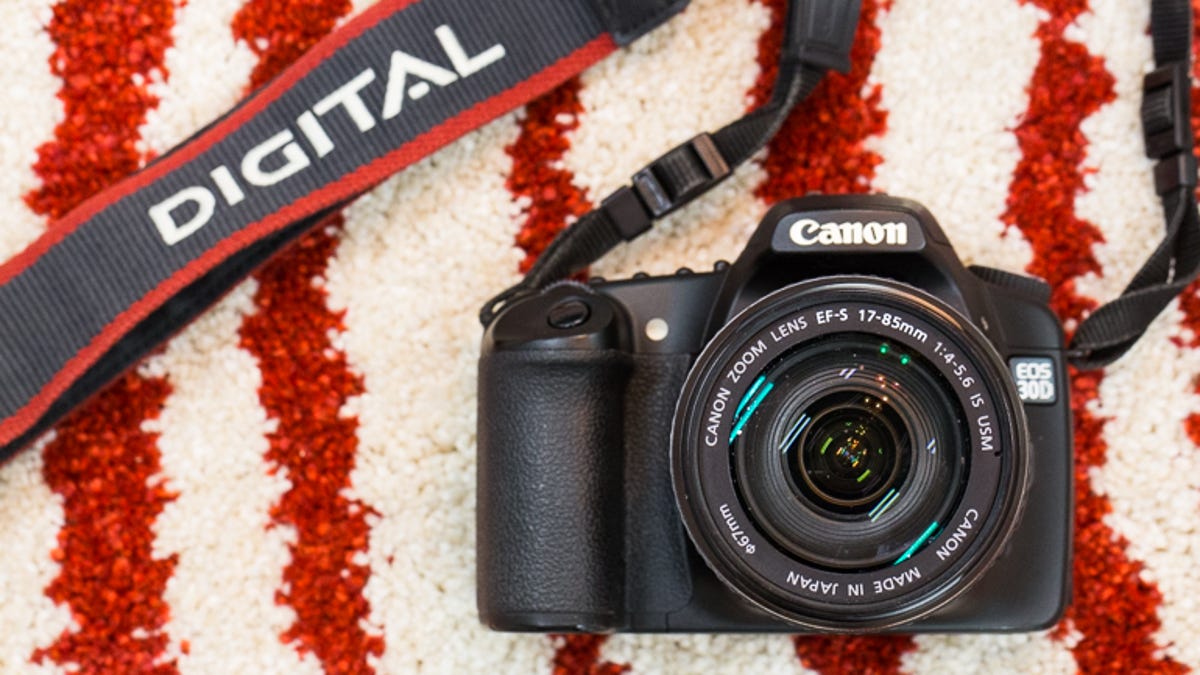How to buy a second-hand digital SLR
Can't quite afford a brand new digital SLR? Here are some tips to help you buy a great pre-loved camera.

As the digital SLR update cycle ticks along, many photographers will choose to upgrade their equipment to the latest and greatest. This means that the second-hand camera market is incredibly healthy, with more options than ever for the discerning buyer.
Here are some tips and tricks to help you make the most of your purchase.
Check the shutter count
The second method is to use a third-party program, such as EOSInfo for Canon, to find the actuation count. Some EXIF viewers will display the complete metadata, which often includes the shutter count. A good program for displaying extended EXIF data is PhotoME.
Nikon and Pentax users can head over to myshuttercount.com and upload an NEF or DNG file produced by the camera to acquire the actuation count.
The number you obtain probably looks relatively arbitrary without a reference point, so check the aggregation page at www.olegkikin.com, which lists reports on shutter count for older dSLRs. If you are looking at a newer camera not covered by this site, a quick Google search with the model name and "shutter life" or "shutter rating" should bring up a result.
While we're on the topic of shutters, shoot a few frames with the camera at different shutter speeds to ensure everything sounds like it should. Squeaks or something jamming is not a good sign and indicates that the camera needs cleaning or a complete service.
Check the sensor
A good way to check for sensor issues is to shoot into a bright subject (such as blue sky) or a white wall with adequate light and the lens stopped down to its minimum aperture, say f/22. Observing the resulting image on a computer or the screen at full magnification will show if there are any obvious issues like dust that need resolving.
Dead or hot pixels on the sensor can also be identified using this method, though you might also want to shoot a totally dark subject (such as take a photo with the lens cap attached) to compare with the bright image for verification purposes.
It's also recommended that you physically inspect the sensor by lifting the mirror release. This is usually done through options in the camera menu system. Check the sensor for any visible markings or dust particles.
Look at the mirror box for similar issues. Dust can usually be cleaned from the sensor, but scratches or abrasions indicate a much more serious issue.
It's all about the lens
Inspect the screen
The camera's LCD screen is the main way you will be interacting with your photos on the camera.
Wear and tear
Buying from eBay or an online listing? Make sure to check the photos for visible signs of wear and tear.
Depending on the camera you are looking to buy, it might be worth asking the seller for some sample photos taken with the camera. This isn't to see how good their photography skills are, but to determine the conditions in which the camera was used. For example, if you see a lot of seaside or wet weather shots, it's a fair bet that the camera has seen some sand and water in its time.
Another indicator of heavy use is the shutter button and dials. Check for wear marks, or if the coating has come off any particular component. A good trick for determining wear and tear is if the plastic on buttons and dials looks a little shinier than pictures you have seen of other models. It's probably a sign that the camera has seen some tough times.
The strap and lens cap, which have probably been with the camera since it was new, can also show signs of heavy use.
If you can, mount a lens on the camera in order to check its condition. Any difficulties in attaching a lens or removing it can mean lens mount issues. Inspect the pins and make sure the lens locks in correctly.
Check the add-ons
It is a bonus if the seller has kept all the documentation and the box in reasonable condition, but check that the bare essentials are included. Things like the battery charger, lens and body caps, and interface cables to connect the camera to your computer are all important.
Sometimes, sellers will throw in accessories such as lens filters, card readers, extra batteries, or memory cards.
Warranty
Some camera shops may offer a warranty on used gear purchases, but sellers on eBay may not be so forgiving.
If the camera is new enough, you may think that you are eligible to transfer the current warranty once you purchase the second-hand camera. Unfortunately, that's not the case for pretty much all major manufacturers. Below is an excerpt from Canon Australia's warranty statement:
This warranty is valid only for products that are purchased new and unused in Australia or New Zealand from Canon Australia Pty Ltd, Canon New Zealand Ltd or a reseller authorised by either of those companies. The customer must provide the original proof of purchase from one of those organisations to receive any services under this warranty.
Warranties on camera bodies will differ between countries around the world. Lenses may be covered by a worldwide warranty, though again you will need to check each manufacturer's guidelines on a case-by-case basis.

